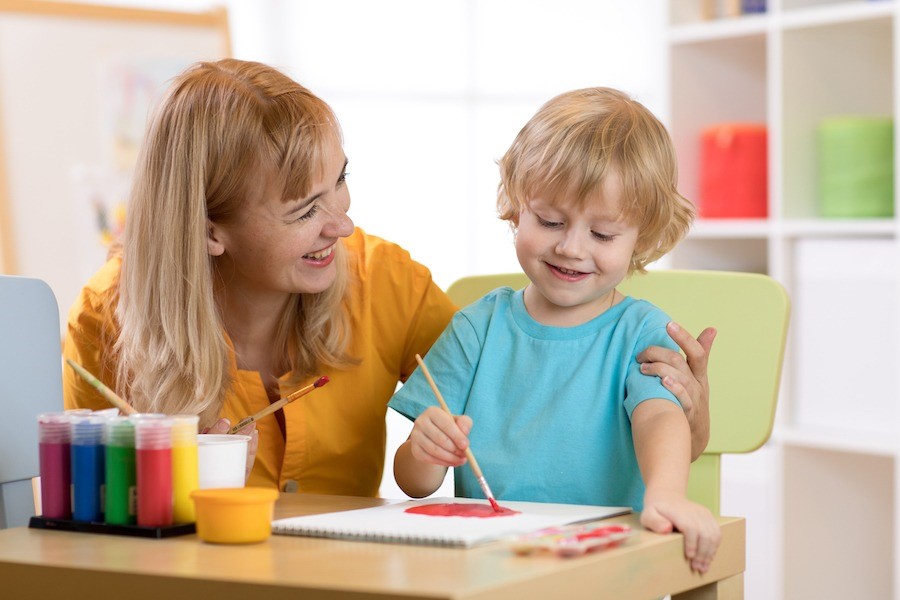- 855.224.8655
- Schedule a Tour

Next to the bond between a parent and child, the bond between a teacher and child is one of the most important for a child’s development. Children with positive outlooks on life and learning are more likely to be successful. Here are four tips to help you actively work to build this bond in your classroom.
Be Considerate of the Child
One of the most important things a teacher can do is show a child that you care. This involves being genuine in interactions, actively listening, and responding to the needs of the child. If a child is upset or frustrated, it is your responsibility to help him or her determine what the cause is, and provide strategies, if needed, to work through the situation.
Listen, reflect on, and validate a child’s emotions to show him or her that their feelings are important to you and his or her well-being.
Provide Clear Expectations and Give Choices when Appropriate
Take time to let the children know what the expectations are in your classroom. Older children may be able to provide ideas for setting expectations. Clear expectations allow children to follow through on directions and make wise decisions.
When appropriate allow children to make choices, this provides them a sense of control over the situation and builds self-confidence by allowing them to feel that you trust their decisions.
Take Time to Connect with Each Child
Take time every day to connect with each child individually. Greeting a child warmly and talking in a pleasant, calm voice helps you develop a secure teacher, child relationships. It is also important to get to know each child and appreciate where he or she is at in their development, understanding, and interests. This will allow you to better tap into how to reach and motivate each individual child.
Speak to Each Child on His or Her Level
When speaking to a child, kneel or lean down to get on his or her level. Eye contact is also incredibly important. Whether you’re communicating directions or asking the child a question, this body language demonstrates that you are engaged and listening.
A positive teacher-child relationship has a tremendous impact on a young child’s ability to learn and grow. Take the time to foster trusting relationships, and you’ll find that it’s much easier to manage your classroom and create a positive learning environment.
